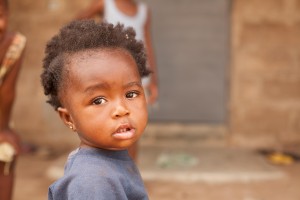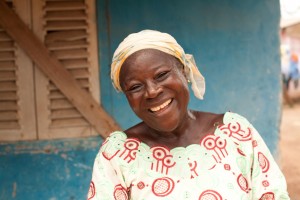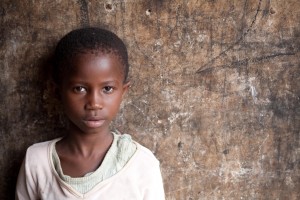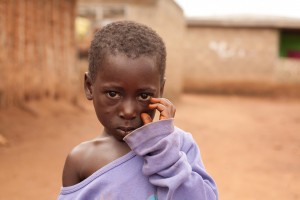What does honest faith look like? If I head out to the margins, the places at the edge of things where our messiness and Christ’s forgiveness meet, I have the best chance of finding the answer to that question. From time to time, I’d like to introduce you to people I know who’ve followed Jesus out to the margins. You and I may not sign off on each of these friends’ choices or convictions, but I hope their stories will spur you to wander out to the margins yourself. (If you do, let me know what you find there!)
I used to go over to my friend Ginnie Lange’s home and wonder at the amount of family photos she’d grouped on many of the walls of her home or clustered in frames on shelves, a sideboard or atop the piano. There were, as I recall, a few of those happy-police-line-up-style Olan Mills/Sears-type portraits of her four beautiful daughters. But as time went on, more and more of Ginnie’s photography filled the dozens of frames in her home.
As her kids left the nest, Ginnie and her husband left the smaller church they’d attended for many years, and began attending Willow Creek Community Church. This move, and her involvement with the microfinance organization, led her far beyond the four walls of the megachurch. As she, her passport and her camera moved out to the margins, Ginnie Lange discovered her vocation as a visual storyteller.
Q: When did you first realize that photography was more than a hobby for you?
Willow Creek was instrumental in my journey of discovery. In 2007, while at a Willow Creek Leadership Conference, I listened to Bill Hybels interview writer/director Richard Curtis (of Bridget Jones’ Diary fame), who told the audience how as a young man he was so moved by a first-hand experience working with the poor that he has since dedicated his skills as a visual story teller to change how we in First World countries view the poor. He challenged us in the audience to make a difference. I sat there asking myself the question: “What skill do I have that God might use to change the life of someone in need?”
I didn’t have to look far to find my answer. I had skill with a camera and the growing certainty that I was born to make a difference. That answer changed the direction of my life.
Q: Who influenced your move from taking pictures of your family to also include documenting people’s stories, particularly those of women and children?
Artistically speaking, a local teacher named Art Hand. Then, I’d cite the work of humanitarian photographer David DuChemin as my biggest influence. I also am moved by the humanitarian work of Sebastiao Salgado.
I continue to have a growing awareness of the enormity of the difficulties women were facing globally: HIV/AIDS, sexual and physical violence, hunger and poverty. My life as a mother of daughters, and a defining moment within our family, has given me a specific burden for daughters across the globe and the systemic injustices that they suffer.
Q: What led you from that seat in Willow Creek’s auditorium to head overseas (as well as into the corners of your own community) with your camera?
I had the opportunity to visit an orphanage in Mexico in 2008 with a group through Willow Creek, and it was a safe first time experience outside of the US. In 2009 and 2010, I had the opportunity to visit an International Aid Services micro-finance partnership in Ghana. I learned about how micro-lending works and how its primary beneficiaries are women and children. I had the opportunity to hear the stories of the people in the program, which predominately serves the women in the region, and how micro-lending has changed their lives, their families and their villages, and given them a hope for a future. The mission of IAS is very personal to me, and I have grown to love the people there.
Q: Your images are featured on the website of IAS. In what other ways are you sharing the images you’ve captured? How are you continuing to grow this gift in your life?
I want to share the images I have taken with the hope that the visual story would prompt people to take action. I have had a number of one-woman shows in my area that have given me a platform from which to share these stories and the work IAS is doing in Ghana.
It is important to me to not only be a photographer but a craftsman as well. Toward that end, I have taken photography classes at a local college, some independent study courses, as well as area workshops. A highlight in my photographic journey was having the opportunity to attend a small weekend workshop with David DuChemin, who affirmed my work and encouraged my vision of telling visual stories.
Q: How has your faith informed your work?
Without my belief that God has a larger story to tell, I would just be a photographer taking pictures. But I believe that, as a Christ follower, I have an obligation to my neighbor, to the “least of these”, to use whatever resources and gifts that I may have to make a difference in the life of one person at a time. When God asks, “Whom shall I send?”, I believe my response must be “Please, God, send me!”
It is my prayer that what I do will make a difference in the lives of the lost, the poor, the wounded, the sick.
Click here if you’d like to contact Ginnie.
Have you ever heard of the practice of Visio Divina? If you haven’t, click here to learn more about this spiritual exercise. Then, why not take a few minutes to prayerfully contemplate one of Ginnie’s images?















